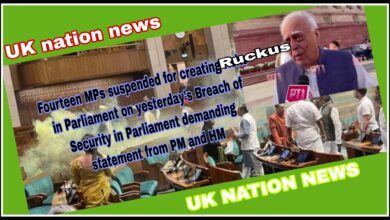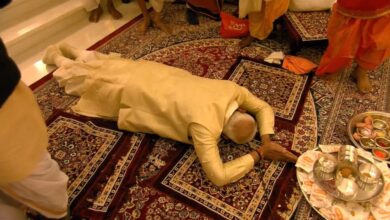
[By Prof. S.S. Dogra]
November 4, 2025 | New Delhi
The political landscape of Bihar is once again abuzz with election fervor. From the streets and marketplaces to social media platforms, the air is thick with debates and predictions. Amidst posters, rallies, and slogans, one question echoes across the state—Will this election be decided by the promise of development or by the arithmetic of alliances?
A New Political Chapter Begins with Women Empowerment
Chief Minister Nitish Kumar has placed his biggest bet this election on women empowerment. Under his new initiative, “Empowered Bihar, Prosperous Women,” direct financial assistance of ₹10,000 is being transferred to the bank accounts of women across the state.
The move is seen not only as economic relief but also as an emotional bridge to connect with female voters.
It is no secret that in Bihar, women’s voter turnout has consistently surpassed that of men. Hence, this decision by the Chief Minister is more than a welfare scheme—it is a strategic political investment.
NDA’s Coordinated Edge and the Modi Factor
The National Democratic Alliance (NDA) appears more organized and unified than ever before.
The equal seat-sharing between the BJP and JD(U) (101 each) and the allocation of 29 seats to LJP (Ram Vilas) sends out a clear message of internal cohesion.
Prime Minister Narendra Modi and Home Minister Amit Shah’s relentless campaigning, coupled with slogans like “Viksit Bihar, Vishwasniya Neta” (Developed Bihar, Reliable Leadership), have energized the BJP–JD(U) cadre.
Modi’s personal charisma and the central government’s flagship welfare programs—such as the Pradhan Mantri Awas Yojana, Ujjwala Scheme, and Kisan Samman Nidhi—are being projected as symbols of inclusive growth and governance.
The Opposition’s Struggle and Reliance on Public Sentiment
On the other hand, the Mahagathbandhan (Grand Alliance) led by Tejashwi Yadav, with the Congress and Left parties as partners, has launched a campaign focusing on unemployment, inflation and corruption.
Their slogan “Rozgar, Shiksha aur Nyay” (Employment, Education, and Justice) seeks to strike a chord with common citizens.
Yet, the alliance faces major challenges—chiefly, organizational unity and leadership clarity. Internal disagreements over seat distribution and candidate selection have slowed down their momentum on the ground.
War of Words and Campaign Rhetoric
The election campaign has turned into a battleground of sharp exchanges and biting satire.
At her rallies in Patna, Priyanka Gandhi mocked Prime Minister Modi, suggesting that he should create a “Ministry of Insults” so that he could dedicate himself to accusing the opposition.
She urged women voters to “accept the ₹10,000 from the government, but don’t vote for them—because their intentions aren’t clean.”
Congress President Mallikarjun Kharge accused Nitish Kumar of abandoning the ideals of socialism and Lohia-ism “for the greed of power,” claiming that Modi “will never allow him to remain Chief Minister.”
Meanwhile, Uttar Pradesh Chief Minister Yogi Adityanath, a star campaigner for the BJP, took a jibe at opposition leaders Rahul Gandhi, Tejashwi Yadav and Akhilesh Yadav, calling them “three new monkeys”—who “can neither see, hear, nor speak” about the development work being carried out by the NDA government.
These fiery exchanges have made the campaign theatrically engaging, but they also reinforce the public perception that leaders are more focused on attacking each other than on presenting a clear vision for Bihar’s future.
Opinion Polls Show NDA Lead, But Caste Equations Still Crucial.
Recent opinion polls indicate that the NDA currently holds an edge, with projected vote shares ranging between 43–49%, while the Mahagathbandhan trails at 35–39%. If these trends continue, the NDA could win around 150 seats.
However, Bihar’s politics can never be defined by statistics alone—it remains deeply influenced by caste configurations and grassroots sentiment.
The electoral mood of the Yadavs, Kurmis, Extremely Backward Classes (EBCs), and Mahadalits will play a decisive role in shaping the final outcome.
Youth and Unemployment—The Central Question
Unemployment continues to be Bihar’s most pressing issue. Millions of young men and women migrate to other states in search of work. Tejashwi Yadav has made this crisis his core campaign plank. Conversely, the NDA maintains that long-term industrial growth and state–centre coordination are key to reversing this trend.
On social media, debates around “Rozgar vs. Prachar” (Jobs vs. Propaganda) highlight the ideological divide between the two camps.
Conclusion: A Battle Between Policy and Performance
The 2025 Bihar Assembly Election is no longer just a contest for power—it has evolved into a struggle between policy promises and tangible results.
Chief Minister Nitish Kumar’s administrative experience, backed by Prime Minister Modi’s charisma, gives the NDA an apparent advantage.
Yet, Tejashwi Yadav’s youthful appeal and his focus on people’s frustrations inject new energy into the opposition’s campaign.
The first phase of voting concludes on November 6, followed by the second on November 11.
Voters this time appear more inclined toward development, education and employment rather than emotional or caste-based appeals.
When the results are declared on November 14, it will become clear whether the “double-engine government” retains its momentum—or if Bihar chooses a new direction.
Ultimately, this election is more than a political event—it is a social document, reflecting how far the people of Bihar have moved from rhetoric to real results.
And therein lies the true democratic essence of this election.
–––
(Author: Prof. S.S. Dogra – Bureau Chief-Delhi for Himalini Magazine, Nepal and Founder, Creatives World Media Academy.)





